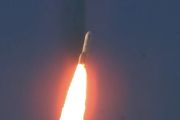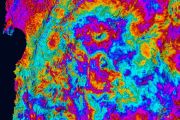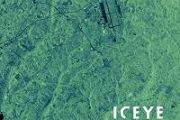
Copernical Team
How to capture moon landing videos—from grainy to HD
This request seems a bit unusual, so we need to confirm that you're human. Please press and hold the button until it turns completely green. Thank you for your cooperation!
Press and hold the button
If you believe this is an error, please contact our support team.
185.132.36.159 : 1ddb5eeb-05f7-4500-982d-0132bf2d
A new nuclear rocket technology takes another step forward
This request seems a bit unusual, so we need to confirm that you're human. Please press and hold the button until it turns completely green. Thank you for your cooperation!
Press and hold the button
If you believe this is an error, please contact our support team.
185.132.36.159 : f98e1420-4e68-4e9e-b8f9-da9c7ed6
MTG-S and Sentinel-4 undergo pre-launch manoeuvres
 Image:
Following the arrival at Cape Canaveral in Florida, US, the Meteosat Third Generation Sounder satellite and the Copernicus Sentinel-4 instrument on board are currently being tested and prepared for launch, scheduled in July 2025.
Image:
Following the arrival at Cape Canaveral in Florida, US, the Meteosat Third Generation Sounder satellite and the Copernicus Sentinel-4 instrument on board are currently being tested and prepared for launch, scheduled in July 2025. New gravity test using 3D velocities of wide binaries backs modified Newtonian dynamics
 Astrophysicist Kyu-Hyun Chae of Sejong University has developed a new technique to test gravity at very low accelerations using the full 3D velocities of wide binary stars. Unlike previous methods limited to 2D sky-projected data, Chae's approach leverages Bayesian inference and Markov Chain Monte Carlo simulations to derive the probability distribution of a gravity parameter directly from relat
Astrophysicist Kyu-Hyun Chae of Sejong University has developed a new technique to test gravity at very low accelerations using the full 3D velocities of wide binary stars. Unlike previous methods limited to 2D sky-projected data, Chae's approach leverages Bayesian inference and Markov Chain Monte Carlo simulations to derive the probability distribution of a gravity parameter directly from relat SATMAR nanosatellite to debut in June advancing digital maritime connectivity
 The maritime industry's digital evolution will gain momentum on June 21 with the scheduled launch of SATMAR, a 6U nanosatellite engineered entirely by Alen Space. The satellite will lift off aboard a SpaceX Falcon 9 rocket during the Transporter-14 rideshare mission from Vandenberg Space Force Base in California.
Developed in collaboration with Egatel and backed by Spain's Ports 4.0 innova
The maritime industry's digital evolution will gain momentum on June 21 with the scheduled launch of SATMAR, a 6U nanosatellite engineered entirely by Alen Space. The satellite will lift off aboard a SpaceX Falcon 9 rocket during the Transporter-14 rideshare mission from Vandenberg Space Force Base in California.
Developed in collaboration with Egatel and backed by Spain's Ports 4.0 innova Intelsat Secures Indian Approval to Expand Satellite Broadcast Services
 Intelsat has received official authorization from the Indian government to deliver satellite broadcast services directly to India's media sector, becoming one of the first foreign operators to gain such access. This regulatory green light allows Intelsat to accelerate its strategic expansion into the Indian market and deepen its investment in the region.
The approval covers four of Intelsa
Intelsat has received official authorization from the Indian government to deliver satellite broadcast services directly to India's media sector, becoming one of the first foreign operators to gain such access. This regulatory green light allows Intelsat to accelerate its strategic expansion into the Indian market and deepen its investment in the region.
The approval covers four of Intelsa GoBIC intersatellite service reaches operational maturity with TRL9 milestone
 IQ spacecom has announced that its Go.BIC service has attained Technology Readiness Level 9, marking full operational status following comprehensive in-orbit testing. This achievement positions Go.BIC-the first dynamic global on-demand bidirectional intersatellite connection service-as a mature and deployable solution for Low Earth Orbit (LEO) communications.
Go.BIC was launched in collabo
IQ spacecom has announced that its Go.BIC service has attained Technology Readiness Level 9, marking full operational status following comprehensive in-orbit testing. This achievement positions Go.BIC-the first dynamic global on-demand bidirectional intersatellite connection service-as a mature and deployable solution for Low Earth Orbit (LEO) communications.
Go.BIC was launched in collabo EnduroSat secures 43 million euro boost to expand Gen3 satellite manufacturing
 EnduroSat has announced a euro 43 million investment round led by Founders Fund, with CEECAT Capital, Morphosis Capital, and other previous backers participating. The funding will enable the company to accelerate the production of its Gen3 ESPA-class satellites, which weigh between 200 and 500 kilograms and feature advanced avionics and a modular, software-defined design.
These next-gener
EnduroSat has announced a euro 43 million investment round led by Founders Fund, with CEECAT Capital, Morphosis Capital, and other previous backers participating. The funding will enable the company to accelerate the production of its Gen3 ESPA-class satellites, which weigh between 200 and 500 kilograms and feature advanced avionics and a modular, software-defined design.
These next-gener After 50 successful years, the European Space Agency has some big challenges ahead
 This year marks the 50th anniversary of the founding of the European Space Agency (Esa). It has launched spectacularly successful missions, but is different to other space agencies which generally represent one country. Esa is funded by 23 member states and also has cooperation agreements with nations such as Canada.
Esa operates cutting edge spacecraft designed to monitor the Earth, as we
This year marks the 50th anniversary of the founding of the European Space Agency (Esa). It has launched spectacularly successful missions, but is different to other space agencies which generally represent one country. Esa is funded by 23 member states and also has cooperation agreements with nations such as Canada.
Esa operates cutting edge spacecraft designed to monitor the Earth, as we Solar atmosphere seen in sharpest detail yet thanks to new adaptive optics
 A breakthrough in solar imaging technology is offering scientists their clearest view yet of the Sun's corona, the ultra-hot outer layer of the solar atmosphere. Researchers at the U.S. National Science Foundation's National Solar Observatory (NSO) and the New Jersey Institute of Technology (NJIT) have successfully applied adaptive optics-typically used for imaging the Sun's surface-to the coron
A breakthrough in solar imaging technology is offering scientists their clearest view yet of the Sun's corona, the ultra-hot outer layer of the solar atmosphere. Researchers at the U.S. National Science Foundation's National Solar Observatory (NSO) and the New Jersey Institute of Technology (NJIT) have successfully applied adaptive optics-typically used for imaging the Sun's surface-to the coron 


































